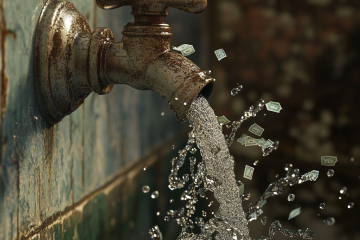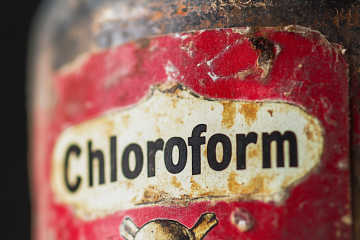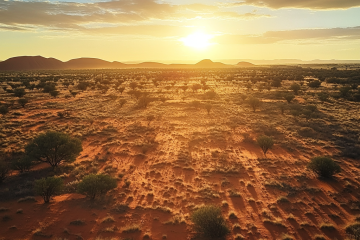
Get the most from your water in an emergency by observing some of the following tips. They’ll make life a little tastier and conserve your water as well.
- A Vegetable Water Bin: When you open a can of vegetables, (peas, corn, etc), instead of draining the liquid and throwing it out, drain it into a large bin, covered with a lid. Drain all of your vegetables in the same bin. (you’ll want to refrigerate this) Then when you make a soup, rice, or pasta, you can use this water to cook with instead of having to use fresh water.The same holds true for any water that you use to cook vegetables in on the stove. Suppose you use just a tad bit of water to steam your cabbage in, for example. Rather than discarding the water, put it in your vegetable water bin instead. I also like to simply use the liquid in the recipe I’m making when it calls for water. That way I get more flavor in the recipe. For example, when I’m making my Chicken Poppyseed Casserole, I conserve the water that comes out of the home-canned chicken and use it to cook the rice with. Yum!
 Save Your Canned Syrups: The same goes for canned fruits, however, the water in these cans tends to be thicker, and certainly sweeter. You can use this “syrup water” to sweeten grain dishes for breakfast such as oatmeal, cracked wheat, etc. It’s also a great substitute for water in many baked good recipes. You can also use this liquid to make a “sweet milk” with your powdered milk and have a very pleasant taste. It’s yet one more way to ensure your children get their nutrients from powdered milk. *grin*
Save Your Canned Syrups: The same goes for canned fruits, however, the water in these cans tends to be thicker, and certainly sweeter. You can use this “syrup water” to sweeten grain dishes for breakfast such as oatmeal, cracked wheat, etc. It’s also a great substitute for water in many baked good recipes. You can also use this liquid to make a “sweet milk” with your powdered milk and have a very pleasant taste. It’s yet one more way to ensure your children get their nutrients from powdered milk. *grin* - Re-Use Your Bath Water: In the “olden days” it was not uncommon for multiple family members to reuse bath water. While it may sound heathen to us now, in a crisis, it should be considered. While a bit of hot water may need to be added, a couple of baths does not constitute needing to throw it out. You can reuse your bath water to wash laundry in. If you use biodegradable bath soap, then you can also use your bath water to water your garden with as well.
- Washing Dishes to the Two-Step: When you wash your dishes, have two bins of water, one for washing, and one for rinsing. When you need to dispose of your wash water, then use your previous rinse water to wash in. (We used this method on the farm when I was growing up because we had to heat up the water for washing dishes.) Yes, you will need to add some more hot water, but it’s obviously a lot less than starting with a new bin of water. Also, the biodegradable soap is a good idea in this case as well.
- Use Paper Goods When Possible: Instead of using dishes for everything, be sure you have paper goods on hand so that you can conserve the amount of water needed for cleaning. The paper goods also serve as good kindling when you’re making a fire to cook with.
 Catch Rain Water: Unless you live in Colorado which forbids its citizens from catching rain water, you should indeed set yourself up to do so. Simply place an open bucket (I recommend a 55 gallon one) at the base of your roof’s run off. You will be shocked at just how fast you can fill up a 55 gallon container with just a couple of mild rain storms. This water can be used for drinking once it’s pasteurized, and it certainly can be used for watering your garden, cleaning, bathing, etc. Don’t overlook what the good Lord can provide you. Capture it. Then rotate a new barrel in once that one’s full. Be sure to clearly mark the water contents though.
Catch Rain Water: Unless you live in Colorado which forbids its citizens from catching rain water, you should indeed set yourself up to do so. Simply place an open bucket (I recommend a 55 gallon one) at the base of your roof’s run off. You will be shocked at just how fast you can fill up a 55 gallon container with just a couple of mild rain storms. This water can be used for drinking once it’s pasteurized, and it certainly can be used for watering your garden, cleaning, bathing, etc. Don’t overlook what the good Lord can provide you. Capture it. Then rotate a new barrel in once that one’s full. Be sure to clearly mark the water contents though. - Catch Bath Water: I have procured a “solar shower” so that I can enjoy a shower in times of “roughing it” rather than using a tub. However, I’ve also purchased a large, shallow, plastic bin about the size of a mini-shower floor. I’ve done so in an effort to capture even the shower water in order to be able to reuse it.
- Alternative Bathing Method: As I hinted at earlier, I lived on a very rustic farm periodically as a kid. We didn’t have the luxury of a bath tub or a shower. Instead, when we needed to bath, we simply filled up a plastic bin with hot water. We then used a washcloth and soap to clean ourselves up. Nothing fancy. But it works just fine, and is a valuable approach to bathing when water is a scarce commodity. We grew up calling this a “spit bath.”
- Save Your Pasta Water: In addition to having a veggie water bin, and a fruit water bin, I would indeed recommend having a pasta water bin to store the water in which you cook your pasta, rice, and other starches in. This water is ideal for thickening sauces, soups, and casseroles. And any Italian Mama that was worth her salt would use some of this pasta water to thicken her sauce.
- Avoid Running Water Actions: Most brush their teeth with running water. You’ll have to get over that habit real quick in a time of emergency. Out of necessity while living in the Philippines, I discovered, lo and behold, that I didn’t need to wet my toothbrush prior to brushing my teeth. And I can simply use a cup of water to rinse my mouth and my toothbrush with. The same holds true for hand washing. If you wash your hands first in a more communal bin for the tough stuff and then just rinse them off with fresh water, you’ll conserve a lot of water.
Overall, before discarding a liquid, ask yourself what else you can possible use the water for? As you may recall, it is recommended that you store 1 gallon, per person, per day for whatever time period you’re preparing for. (I plan on a year.) This gallon of water is intended for drinking, cooking, bathing, and cleaning. However, is it a MINIMUM recommended amount. Putting these conservations tips into practice will help you stretch that gallon to its maximum capacity. I know that sounds like a LOT, especially when you’ve got a family, but water is a high priority in the 10 Principles of Preparedness. You’ll never regret having enough.
For more on storing water, click here.
Copyright Protected 2024, Preparedness Pro and Kellene. All Rights Reserved. No portion of any content on this site may be duplicated, transferred, copied, or published without written permission from the author. However, you are welcome to provide a link to the content on your site or in your written works.



16 Comments
Michael · May 1, 2009 at 11:14 am
Wow!! That is some excellent advice about water usage that I have never thought about. Thanks!
Michael · May 1, 2009 at 11:14 am
Wow!! That is some excellent advice about water usage that I have never thought about. Thanks!
lynnaea · May 1, 2009 at 4:01 pm
This is a great article — thanks.
lynnaea · May 1, 2009 at 4:01 pm
This is a great article — thanks.
Shreela · May 2, 2009 at 2:41 pm
Two bin dish washing cut down on how much stored water we used after Hurricane Ike, as did the 5 gallon solar showers, and spit baths. I used the potable water for both, and non-potable only for washing clothes. We drank water out of the frozen soda/water bottles I’d stored in the freezer/fridge to keep our perishables longer (blankets on the fridge helped keep in the cold). It was nice having cool water, even after I had to transfer food to the igloo as we ate it, or it finally went bad about 5 days after losing power. But I cooked the meat we couldn’t eat for the cats and neighbors pets — better than throwing it away, especially with interrupted trash pickup.
I washed the clothes in the tub because I hadn’t bought my hand-crank barrel washer at the time. If I had bought a new, clean plunger before the hurricane, I could have used it in a 5 gallon bucket, but I didn’t think of it. It would have been cheaper than the barrel washer.
I just placed a big order for food, wheat grinder, and water storage supplies. I ordered 2×55 gallon barrels. Even if we don’t get a hurricane, if we flood deeply enough, our city water might get contaminated. I’m also going to order one of those bathtub bags from WaterBob or HEWS; those store 100 gallons, and are less than half the price of a rain barrel (but not as sturdy).
Shreela · May 2, 2009 at 2:41 pm
Two bin dish washing cut down on how much stored water we used after Hurricane Ike, as did the 5 gallon solar showers, and spit baths. I used the potable water for both, and non-potable only for washing clothes. We drank water out of the frozen soda/water bottles I’d stored in the freezer/fridge to keep our perishables longer (blankets on the fridge helped keep in the cold). It was nice having cool water, even after I had to transfer food to the igloo as we ate it, or it finally went bad about 5 days after losing power. But I cooked the meat we couldn’t eat for the cats and neighbors pets — better than throwing it away, especially with interrupted trash pickup.
I washed the clothes in the tub because I hadn’t bought my hand-crank barrel washer at the time. If I had bought a new, clean plunger before the hurricane, I could have used it in a 5 gallon bucket, but I didn’t think of it. It would have been cheaper than the barrel washer.
I just placed a big order for food, wheat grinder, and water storage supplies. I ordered 2×55 gallon barrels. Even if we don’t get a hurricane, if we flood deeply enough, our city water might get contaminated. I’m also going to order one of those bathtub bags from WaterBob or HEWS; those store 100 gallons, and are less than half the price of a rain barrel (but not as sturdy).
Kellene · May 2, 2009 at 2:57 pm
Thanks SO much for such excellent and helpful comments. I had been exposed to the bathtub bags eons ago and had forgotten about it. Good call!
Kellene · May 2, 2009 at 2:57 pm
Thanks SO much for such excellent and helpful comments. I had been exposed to the bathtub bags eons ago and had forgotten about it. Good call!
Charlene · May 9, 2009 at 7:33 am
Thanks for the excellent tips.
Read on another website somewhere, that it was suggested to take the large liquid dishsoap sized containers like you would get at Costco and fill the with water when they are empty. Mark the container as “SOAPY”. There is enough residual soap in the container to still use this for cleaning in an emergency.
Charlene · May 9, 2009 at 7:33 am
Thanks for the excellent tips.
Read on another website somewhere, that it was suggested to take the large liquid dishsoap sized containers like you would get at Costco and fill the with water when they are empty. Mark the container as “SOAPY”. There is enough residual soap in the container to still use this for cleaning in an emergency.
Laurel Price · April 5, 2012 at 6:36 am
Great article. Very good suggestions. How long and how do you store the juice from canned fruit and vegetables?
Laurel Price · April 5, 2012 at 6:36 am
Great article. Very good suggestions. How long and how do you store the juice from canned fruit and vegetables?
Comments are closed.